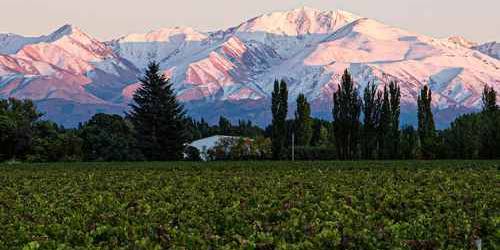Will’s summer guide to Italian white wines…..
I was taking my usual Friday morning stroll through the warehouse to pick out a couple of bottles for the weekend when I was hit by an enormous feeling of nostalgia. My mind had travelled back nearly 20 years to the glory days of wine retail and my body started to warm to the memories and feelings of walking around a Majestic recommending and pointing out bottles for customers.
Italian whites were as popular as ever back then. It was a daily event to be stood in front of the Italian white section recommending Soave, Orvieto, Frascati and, oh what was it called again? Pinot Something, I forget…. Anyway, there was always a massive stack of it that seemed to be en vogue at the time. As the warm fuzzy memories took over me I started to crave dry Italian white and went to grab some. My nostalgia was quickly replaced by indecision and a realisation of how Italian white has moved on over the past 20 years. I was spoilt for choice and went on a new journey of discovery.
Starting on the island of Sicily off Italy’s south western coast you’ll find Catarratto Terra Firma which is a delightfully dry, crisp white with zesty mineral notes and a touch of peachy fruit behind the dominant green apple flavour. At £8.99 it’s a lovely bottle of wine.
As you move on to main land Italy and work your way up the western coast through Calabria and Basilicata you come to the Amalfi Coast and the historic city of Naples in the region of Campania. It is here that Italy produces arguably the country’s most exciting white wines. Falanghina, Fiano & Greco all thrive here and all have the ability to make fresh fruity wines for early drinking or to make fuller more complex wines. All three of these are made by the superb co-operative La Guardiense who are based in Santa Lucia in the province of Benevento. The area has undulating hills and plains which creates different micro climates suited to the different grape varieties. The Falanghina Antiche Torri is sourced from a mixture of sites in the wider Benevento region and is very expressive for it’s humble £7.99 price tag. Saline mineral notes are perfectly balanced with stone fruit, yellow plum and rich citrus. The Greco and Fiano “Janare” are both sourced from the sub-region of Sannio which has some brilliant hillside vineyards. The Fiano is fresh, citrusy and a delightful almond/ginger finish to it. The Greco is fuller, more intense and explodes with a basket of fruit salad flavours.
From Campania, we head due east to the rustic but unfortunately no longer a cheap secret holiday destination of Puglia. Here things get a little bit wacky! It’s estimated that Italy has around 2000 native grape varieties and although production is centred on the top 50ish, there are still wine makers out there who want to rediscover and champion long lost varieties. Gianni Carparelli, owner of I Pastini in the Valle d’Itria which is in the land, between Brindisi and Bari is one such example. Locorotondo, I Pastini is a blend of three local grape varieties – Verdeca (60%), White Alessano (35%) & Minutolo (5%). It’s an extremely elegant and effortless wine with green fruit, apple and tangy lemon. Minutolo ‘Rampone’ I Pastini was near enough extinct before Gianni brought it back. It’s a unique wine with an exotic Muscat aroma, floral notes, jasmine and tropical fruit – well worth trying.
Further up the Adriatic coast, past Abruzzo is the Marche region. It’s here that the climate in the northern Marche changes from Mediterranean to continental and it’s where we find Italy’s most prised white grape variety – Verdicchio. Aldo Cifola who owns La Monacesca makes one of the region’s best examples which demonstrates just how well the grape can age. Verdicchio di Matelica Riserva ‘Mirum’ La Monacesca is a heady glass of wine with similar characteristics to white Burgundy. There is no great secret to Aldo’s success. It’s down to low yields, late harvest, old vine Verdicchio sourced from top parcels high in the Apennines. The acidity is electric and the concentration of fruit outstanding. There is no oak, just sweet luscious fruit. Marche is also home to organic producer Saladini Pilastri which has been a firm favourite here since day one. Falerio, Saladini Pilastri has been a regular with us for many years and offers fantastic value. It’s a blend of Trebbiano, Pecorino and Passerina and is almost too good to be true with its lively pear and lemon fruit.
North of Marche is Emilia Romagna, a food lovely paradise! Eating in Bologna should be on everyone’s bucket list. Further, towards the coast in Rimini, we find Biodynamic producer San Valentino who make a lovely wine from Grechetto, known locally as Rebola. Rebola ‘Bacaia’ San Valentino is a tangy, zesty, dry white with nutty spice behind the lush ripe citrus fruit.
It’s not uncommon in Italy for the same grape to be called different names in different regions but it’s north of Emilia Romagna in Lugana DOC which straddles the Veneto and Lombardy regions on the shore of Lake Garda where the biggest confusion lies. Lugana DOC uses the Trebbiano di Lugana grape variety which is not the ubiquitous Trebbiano grown all over Italy but in fact Verdicchio which has now been given the new name of Turbiana. Lugana Nunzio Ghiraldi is one of the best examples around. A wine that never gives much away on the nose but explodes on the palate with orange blossom, tropical fruit, lime, honey and lemongrass. Snap it up whilst you can because up to 25% of Lugana’s vineyards may be lost to a planned new railway (Sigh).
Due west of Lombardy is the red wine dominated region of Piedmont. The region does however have a few classic white wines with the most famous probably being the 90’s classic Gavi. Gavi Casa Ernesto is a textbook example made from the Cortese grape. Its zingy freshness gives the wine an instant appeal and is backed up with lemon and peach fruit to make it a sophisticated choice. Less well known is the Arneis grape which can be found round the hills of Roero. Roero Arneis ‘Camestri’ Marco Porello is a full-bodied effort with layers of flavour and wonderful mineral texture. Lastly and even less well known is Timorasso. This extraordinary grape was almost extinct but has found a new father in Walter Massa who has single handily revived the ancient grape. We owe him a lot of thanks because it is one of Italy’s most wonderful white wines. Timorasso ‘Derthona’ Walter Massa comes from the steep hills east of Tortona. It produces tiny yields but has immense concentration and develops over time in the glass. Apple, apricot and tangerine notes can all be found. It’s a great example of a white wine that is literally alive in the glass but is not cloudy, oxidised or reeking of cider.
Oh and if none of the 16 grape varieties above gets you excited then I’d highly recommend a glass of Pinot Grigio Terrazze della Luna from Treviso in the Vento region which sounds like it would fit your personality perfectly!
To order online, please go to our shop – https://www.de-burgh.com/shop/
Alternatively, e-mail Will – will@de-burgh.com OR orders@de-burgh.com. If you would prefer to speak to a nice human, please call the office – 01875 595 100
Related Posts
It’s Rose Season!
April 24, 2024
Spring is well underway and even though there's a slight chill in the air. Some sun has been making a welcome appearance. We would say that its totally FINE to start drinking Rose now. And with up to…
Amazing Argentina – Explore the wines of Argentina
February 1, 2024
Argentinian vineyards The UK has been in a lust filled, tango dancing love affair with Argentinean Malbec for a while now. After the Falklands and Jeremy Clarkson’s unique style of diplomacy…
Christmas Delivery Dates & Cut Offs
December 6, 2023
Christmas Delivery Dates & Cut-Offs LAST ORDERS FOR UK-WIDE DELIVERY FOR CHRISTMAS IS MONDAY 18TH DECEMBER. We will be out delivering in our own vans too, so please get in touch to avoid…



